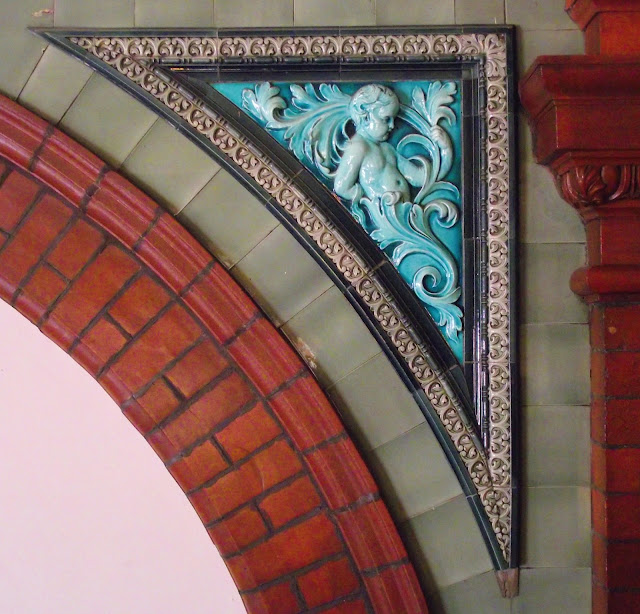
The Rudolph Wurlitzer Company, of Cincinnati, OH, and later North Tonawanda, NY, started making multi-selector phonographs in 1933 - the word "jukebox" wasn't adopted until 1940. The Model 616, designed by Paul Max Fuller, was the last of Wurlitzer's all-wood models, released in 1937. It was available in two principal versions: that photographed (serial number A32237A), and with illuminated Lucite grille bars (Model 616A).
There were also numerous after-market cabinet variations - cut out and lit louvres, illuminated Catalin panels and domes, marble-effect paintwork, a heads-up selector that replaced the original selection wheel, replacement grilles, and bolt-on mirrors. The all-Wurlitzer 616 cabinet itself went through various incarnations, some sporting the coin entry point on the top right of the cabinet, usually with a coin return cup lower down. Some took only nickels, others dimes and quarters too.

This example is an early incarnation, with the coin slides, for nickels, dimes and quarters, to the face of the cabinet, and no coin return mechanism. Some early 616s featured a colour-wheel mounted inside the back of the cabinet, illuminating the plain wood interior of the upper rear door. Others, as here, instead had a coloured clam-shell pattern, formed of pressed cardboard, affixed to the inside of the rear door, and illuminated by a plain bulb. In both cases the machine could be switched for continuous illumination, or only upon insertion of a coin.

About 23,500 Model 616s were manufactured, plus a further 13,600 or so Model 616As. Given the various cabinet adaptations, it is unlikely that any two of the few survivors are exactly the same. All though used the Simplex mechanism, designed in 1932 by Homer Capehart, the rights bought in 1933 by Wurlitzer. The mechanism used in the Model 616 allows for selection from 16 ten-inch 78rpm discs. The chosen disc is swung out on a ring platter and the turntable rises to lift it to the tone-arm. Accordingly, only the 'top' side of each record can be played.
The amplifier used in the 616 was Wurlitzer's Wide Range Sound System, Model 771. Of a robust 155 watts, this was also used in the 316, 416 and 716 Wurlitzers. The amplifier (serial number A15588A) of this example has been overhauled. The motor for the Simplex mechanism has been rewound, and the speaker re-coned.
This survivor is largely unadulterated, the cabinet in fine condition, although the clam-shell decoration has been sprayed silver at some point. A mains transformer and a cycle converter have been fitted to enable use in the UK without re-gearing. The original Model 61 bear's claw tone-arm has been fitted with a light pick-up to protect the 78s. Without end-weight, the tone-arm is instead lifted at the end of a record by an automatic switch-operated solenoid added to the manual lift-off mechanism.



















































